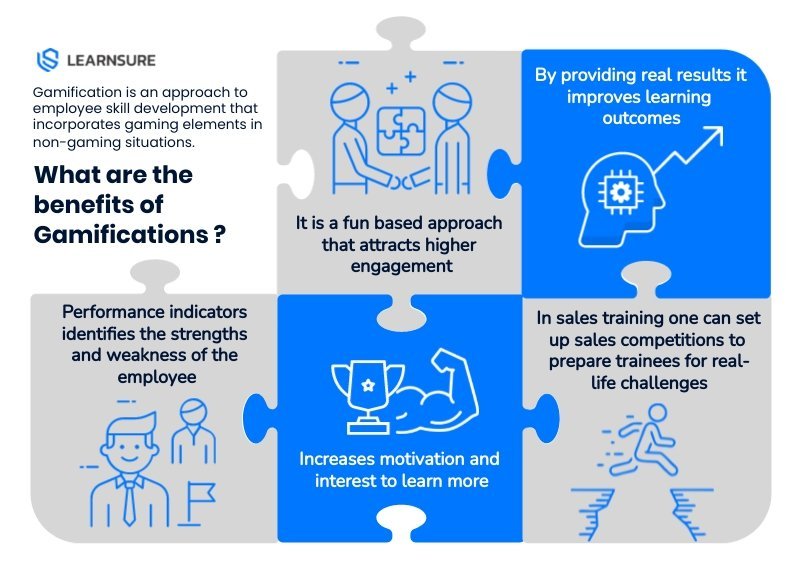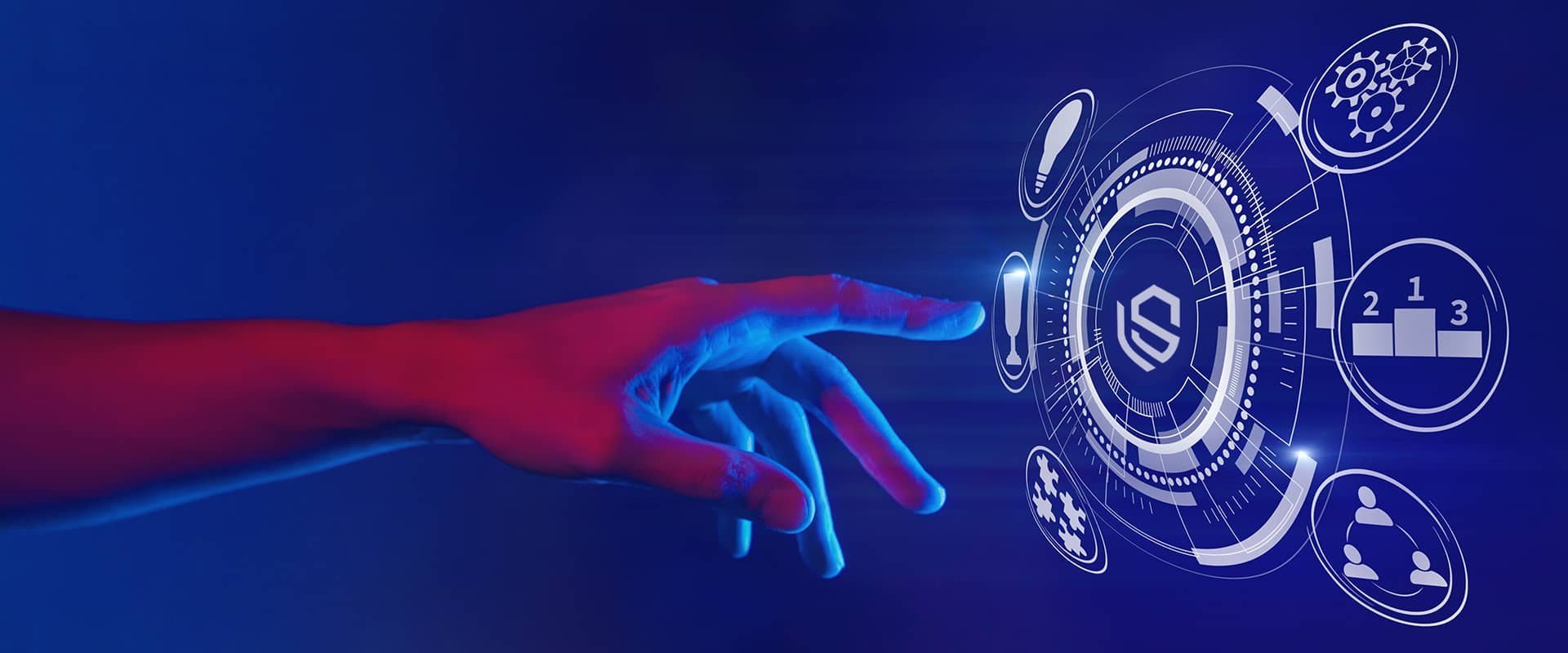Gamification & workplace training: a match made in heaven
Gamification has become an integral part of the corporate world. Many businesses have adopted this innovative approach to workplace training due to all the benefits the method brings to the table. It’s become a well-established productivity tool, and employees who use gamification in learning new skills find the strategy quite engaging.
But what exactly makes gamification one of the best job training solutions, and how can you apply it in your company? Let’s get into the nuts and bolts of this important motivational tool.
What is gamification in corporate training?
Gamification can be defined as an approach to employee skill development that incorporates gaming elements in non-gaming situations. In a corporate environment, managers employ gamification to increase their staff’s motivation, ensure a fun learning environment, enhance engagement, and help the employees learn much-needed skills more efficiently.
Effective gamification strategies offer high completion rates and improved retention. The method can also help business owners complement their learning experience platform (LXP) to provide more engaging entertainment during learning and development initiatives.
What are the benefits of gamification?

Whether gamification is used in insurance training or teaching employees how to present new products, statistics show you’re bound to see improved performance. Here’s how gamification can help your workforce:
1. Gamification increases motivation
A learning environment that revolves around gamification requires acceptance from participants to ensure effectiveness. Thankfully, many elements can help you achieve this goal, such as points and badges. More than 80% of employees who take part in gamification activities feel motivated to learn.
They are driven to study voluntarily, whether out of fun, competitive spirit, or perfectionism. As the team is eager to learn, their knowledge retention increases accordingly.
2. It is conducive to great learning habits
When the gaming elements are designed correctly, they can give rise to behaviours that facilitate learning. For instance, you can improve your learners’ knowledge retention by giving them badges for going back to refresh their learning using previous tests. While such initiatives require precise planning, the results you can obtain can be extremely useful.
3. Valuable feedback
Gamification allows learners to understand their strengths and shortcomings. For example, you can give them a badge for managing their time efficiently and withhold a badge due to low accuracy. The employees can use these performance indicators to determine the areas they need to improve upon.
Besides, the feedback lets managers and executives gain insight into the weaknesses of their employees. This way, they can structure gamification sessions to address the biggest weaknesses their workers face and help the participants overcome them.
4. Gamification is engaging
Another huge advantage of using gamification in learning is that it engages the employees. The participants recognize the meaning they draw from gamification activities, which makes them eager to join in. In turn, they are more productive and more likely to stay with your company.
How should you structure gamification activities?
To reap all the benefits of gamification in the workplace, there are several principles you need to follow:
1. Provide autonomy
Gamification programs shouldn’t force employees to study. Instead, the atmosphere should convey the message that they are in charge. In this manner, peoples’ motivation skyrockets and their learning is enhanced.
2. Offer value
No matter how many badges and leaderboards you include, gamification activities won’t be appealing to your team members if they feel the exercises lack substance. The learning needs to provide meaningful results fast, and the employees should be able to apply this experience in real life.
The ideal way to offer value is to set up bite-sized materials that deal with certain work-related problems. Your workers can refer to them when they want to find out how to perform specific tasks and immediately implement their skills.
3. Reinforce learning
The better your team is at specific activities, the more likely they are to revisit them. As a result, gamification is a great way to reinforce learning. But the content needs to be diverse and include interactive quizzes, various rewards, and leaderboards to boost the team’s competitive spirit.
Examples of gamification in the workplace
Gamification leaves you with a lot of room to improvise and develop games that suit your company. Here are a few examples you can use as a starting point of your gamified corporate learning activities:
1. Partial gamification – Quizzes
At the entry-level, you can apply gamification as quizzes or assessment as part of a conventional e-learning course. You can also use it as a challenge in microlearning settings.
For instance, your quiz can require the participants to make their way through roadblocks. When they reach a roadblock, they need to answer a question or complete a challenge to proceed. With each successful completion, the employees earn bonuses that provide a sense of achievement.
2. Game-based Learning
Another great idea is to turn the learning path into a fun game with badges, scores, and leaderboards. This is especially useful if you want to set up a compliance training session and help new team members learn about official regulations and your company’s code of conduct.
This way, you’ll save your employees from hours of skimming through, for example, extensive anti-bribery and sexual harassment laws. With gamification in the picture, even the most complex topics can be engaging if presented in a fun fashion. Just remember to keep the activities brief and concise so that they contain all the key points without going into unnecessary details.
3. Sales training
Gamification is also perfect for conducting workplace competition in the BFSI sector. By adding gamification elements, such as rewards for completing challenges, your sales agents are encouraged to take a proactive approach to their job and engage in positive initiatives (e.g., professional development and team-building events). Gamification rewards are also not as costly as investing in new employees or raising commissions. For instance, Learnsure’s gamification features allow the participants to connect with the learning material on a deeper level. This is because all the materials are directly related to their trade, ensuring high engagement. Using our platform, you can set up sales competitions that will prepare your workers for real-life challenges. As a result, both individual and overall performance within your company will be boosted.
Gamification is the way of the future
While traditional workplace training methods can be useful, taking a modern approach like gamification is better suited for today’s corporate world. Much of your staff may consist of millennials, who likely prefer fun and tech-based training methods. That’s why gamification in learning should be your top priority when you want to engage your team and make them motivated to acquire new skills in a fun way.
We’ve given you a few examples of how to implement gamification, but the story doesn’t end there. If you want to see this strategy in its full swing, reach out to Learnsure. We offer polished training methods that will make your workers more productive. Book your demo now and check out our impressive services.

